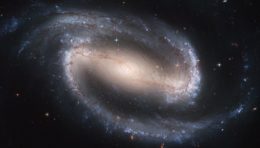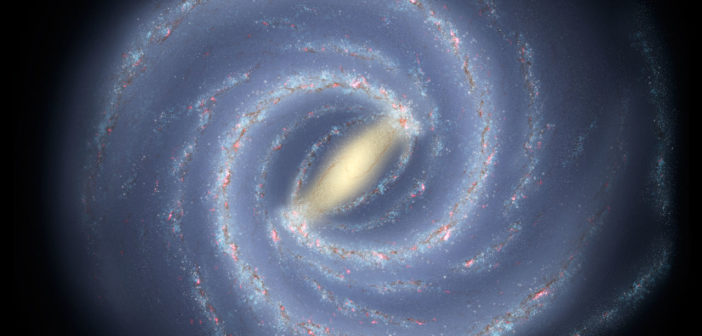It’s hard to translate an image taken by a telescope to a physical object like a galaxy, but, like with most things, computers have made the job easier. Astronomers can code models of galaxies and determine the most realistic models based on observations. A recent study showcases this, presenting a code that can model all sorts of galaxies along with their internal motions.

Hubble view of NGC 1300, a barred spiral galaxy. [NASA, ESA, and The Hubble Heritage Team (STScI/AURA)]
Physical Frameworks and Altered Orbits
Any model begins with some assumed framework of physics. In a 1979 paper, Martin Schwarzschild proposed a method of modeling groups of stars called the orbit-superposition method. This method assumed that a system could be modeled as a gravitational potential that had objects orbiting in it and that properties of the system could be studied by seeing how the orbits changed with time.
While Schwarzschild used the orbit-superposition method to consider elliptical galaxies, other researchers have used it to study galaxies with more distinct structures like disks and bars. Since the 1990s, the Schwarzschild orbit-superposition method has been used extensively in galaxy modeling.
In a new study, Eugene Vasiliev (University of Cambridge) and Monica Valluri (University of Michigan) present a new code called Forstand, an implementation of the Schwarzschild method that can be applied to all sorts of galaxies without excessive computational cost.

An example of modeling results (top) and mock kinematic data (bottom). In the results plot, β and α describe the orientation of the mock galaxy. Ω is pattern speed and ɣ is mass-to-light ratio. The gray dots are the models considered and the red cross is the true value. The blue contours show the likeliest values for the pattern speed and mass-to-light ratio. The mock data plot is a velocity map, highlighting the x-, y-, and z-axes. The velocities changing from negative to positive indicates that the galaxy is rotating. [Adapted from Vasiliev & Valluri 2020]
Mockups of Mock Galaxies
The code was tested with two different data sets of mock galaxies — one that was low-resolution but spanned large regions of the component galaxies, and one that was high resolution but only covered the central regions of galaxies. The mock galaxies were all roughly the size of the Milky Way and had variations in their structure and orientation.
Vasiliev and Valluri assumed that the 3D shapes of their galaxies were known, acknowledging that this assumption can’t easily be made in the case of observational data. However, in all other ways the mock data were very similar to data taken by actual astronomical instruments.
The code was able to accurately recover the mass-to-light ratios and the pattern speeds of the mock galaxies. For galaxies, the mass-to-light ratio lets astronomers understand how much of the matter in a galaxy is dark matter. The pattern speed has to do with how the overall structure of a galaxy — spiral arms, for example — moves.
Vasiliev and Valluri wrapped up with avenues for improvement on their code. Forstand wasn’t able to recover the properties of certain galaxy components, specifically central black holes and dark matter haloes. There’s also still the issue of determining 3D galaxy shapes, which can be tricky to constrain observationally.
However, room for improvement doesn’t take away from the fact that the Schwarzschild method is a powerful tool when it comes to modeling galaxies. And Vasiliev and Valluri seem to have come up with a code that makes the Schwarzschild method far more accessible than before.
Citation
“A New Implementation of the Schwarzschild Method for Constructing Observationally Driven Dynamical Models of Galaxies of All Morphological Types,” Eugene Vasiliev and Monica Valluri 2020 ApJ 889 39. doi:10.3847/1538-4357/ab5fe0
